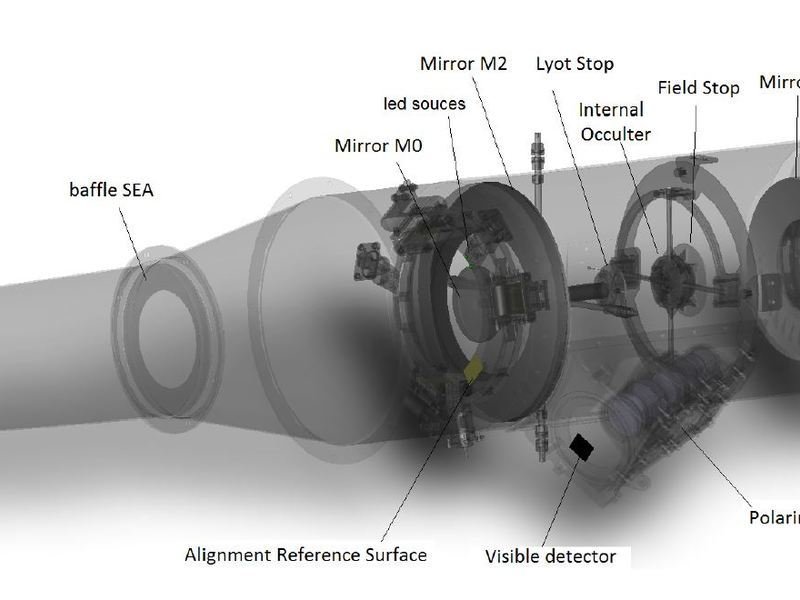
The Metis Coronagraph
A coronal imager for the Solar-Orbiter mission
The Metis instrument is an inverted-occultation coronagraph part of the Solar Orbiter payload. The instrument flight model has been integrated on the spacecraft and it is undergoing testing at spacecraft level. It will study the structure and dynamics of the solar corona with unprecedented temporal and spatial resolution at different heights over the ecliptic plane. The instrument is crucial to the Solar Orbiter mission as it provides the needed link between the solar atmosphere and the inner heliosphere.
Metis will image the solar corona between 1.5 and 3 solar radii in two different wavelengths, visible light between 580 and 640 nm, and the Lyman-alpha line of hydrogen (H I 121.6 nm) by a combination of broad-band coatings (Al-MgF2) on the mirrors and spectral bandpass filters. The visible channel also includes a polarimeter assembly to observe the linearly polarized component of the K corona.


Narrow band imaging in Lyman alpha will allow the determination of the outflow speed of protons. Simultaneous images in linearly polarized and un-polarized white-light will provide information about the electron density in the corona. This will be crucial for understanding solar wind acceleration processes and will put strong constraints on related theories.
MPS provides the Visible Light Detector Assembly (VLDA) and the UltraViolet Detector Assembly (UVDA) that form the Metis Detection Subsystem (MDS). The MDS also includes service units such as the High Voltage Unit (HVU) serving the Ultraviolet detector (intensified APS), the Camera Power Converter (CPC) serving both assemblies, and brackets handling electrical interfaces. All these units have been designed, assembled, tested and qualified (mechanical and thermal vacuum) by MPS.



